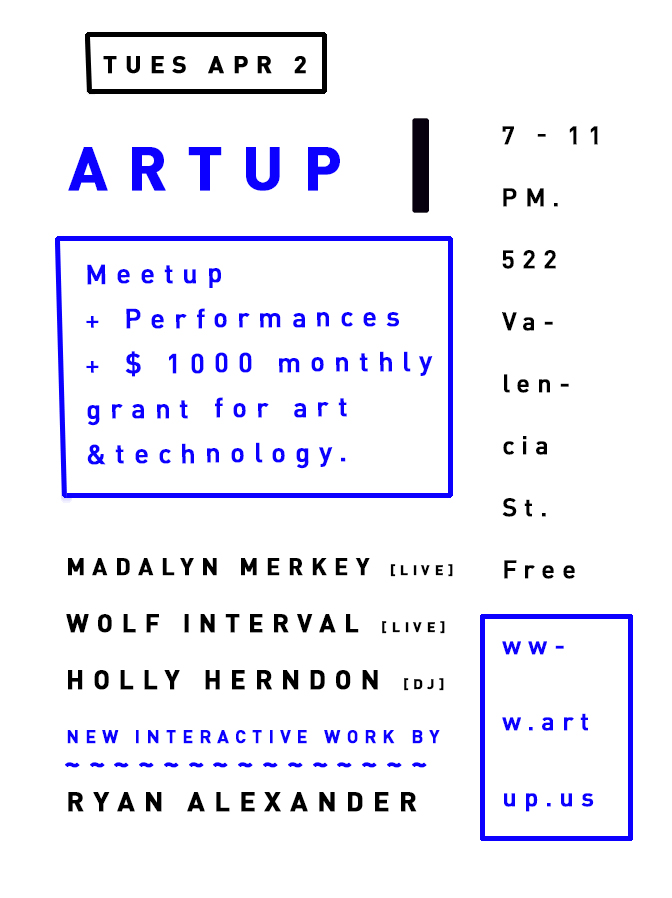Artup co-Founder Mat Dryhurst just completed a provocative op-ed article for Art Practical around the issues confronting the culture and technology sectors of the Bay Area. Published in two parts, this conversation with Brian Rogers starts with a survey of the rich variety of artists, projects and organizations currently practicing in the Bay Area, and then starts to consider some potential investigative entry points to affect stronger cultural relationship between Art and Tech in the Bay. It’s a must read for anyone interested in the issues of the arts economy in San Francisco.
Excerpt from Part One:
MD: Once we get past generalizations, we will notice that the best people in art and tech share common goals and sensibilities. Identifying and creating conversations between these kinds of people is one powerful way to subvert the current climate that is pushing mindful people of all backgrounds out of the city. Making clumsy generalizations about “tech” antagonizes the venerable history of radical technology in this city and ultimately threatens to alienate those in tech who could help get everyone out of this mess.
BR: There’s a long local history of forward-thinking tech development on the West Coast. It’s not a mistake that California emerged as an (admittedly unwieldy) epicenter for technologies of the self, a moment that was at least an attempt to mutually grasp technological, conceptual, social, and aesthetic vanguards…
And Part Two:
BR: Art should make, to quote Negarestani again, “extreme hypotheses,” and should use any materials necessary (including and in particular technology) to make them. This isn’t an idea that artists should make inflated claims about aspiring toward, but it’s also a horizon that—as people who are nominally interested in how we work and how we work in the world—artists should recognize and use as a perspective from which to ask difficult but necessary questions.
MD: We need to recognize that this is the best place in the world to make art about tech. Decisions made about technology in the Bay Area will go on to fundamentally reconfigure the lives of people all over the world, and whether we take a supportive or antagonistic stance, Bay Area artists have first option to play a role in that discourse
and trajectory if we choose to.




